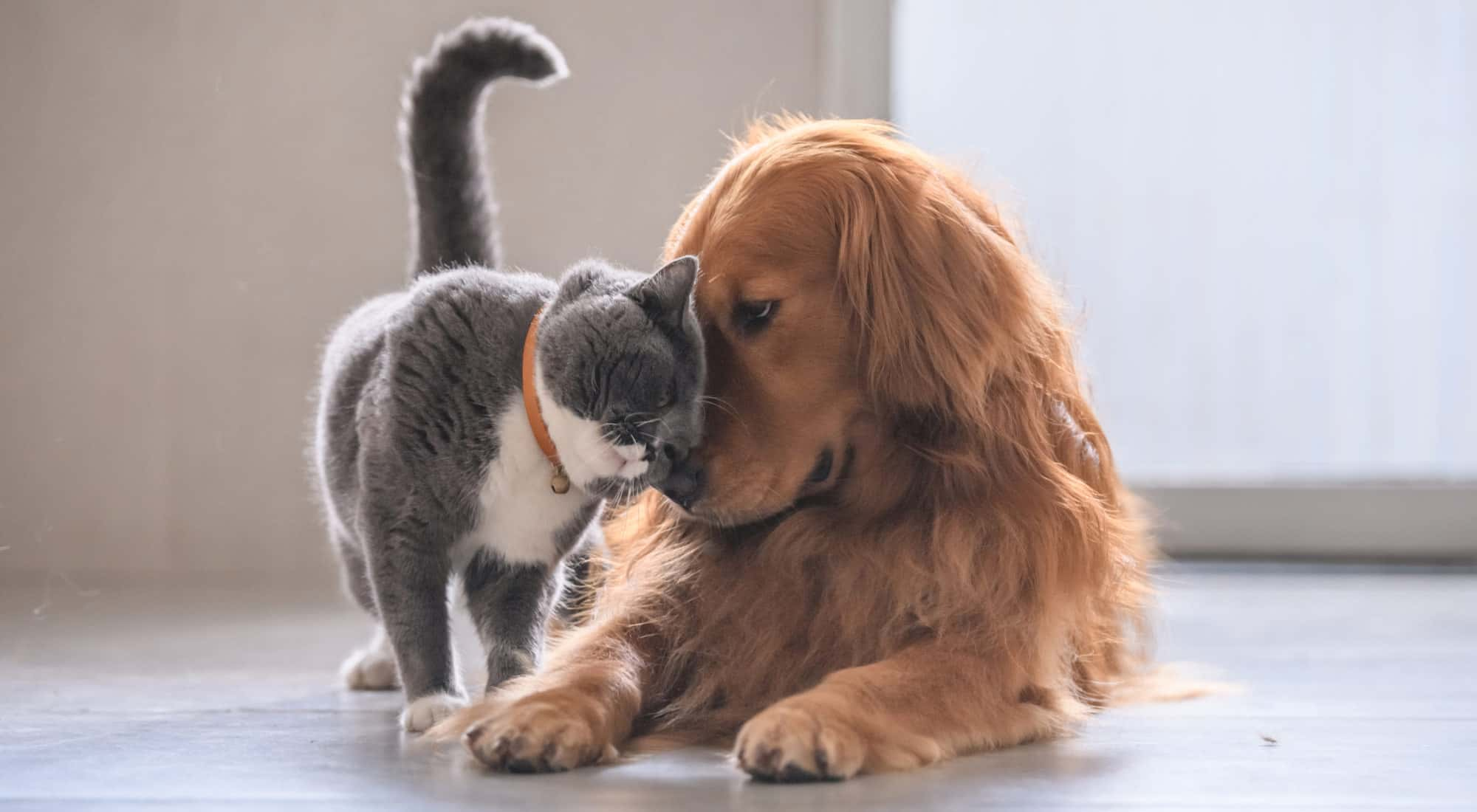You made it out of the baby—er, kitten or puppy—stage with a few “accidents on the new white rug” or mishaps with clawed furniture. Now you’re the proud parent of a fairly well-trained, grown pet that improves your quality of life approximately 1,000%. A round of high-fives is in order.
Next: Uh… wait, what comes next?
As your animal ages, their needs can change too. We asked veterinarian Dr. Garrett Schuilenberg what adult pets need to be happy and healthy during the prime of their animal lives. Here’s what he had to share:
Living their best life
When it comes to training, the toughest years are most likely behind you, but that doesn’t mean it’s time to give up on teaching your pet new tricks.
Animals of all ages love learning and engagement (just like us). Novelty in the form of new toys and training, such as new tricks, is very stimulating and keeps their brains and bodies active. Boredom and inactivity can lead a well-meaning pet down the wrong path and towards the decimation of some expensive drapes or your favourite pair of slippers.
Exercise remains important at this time too. It supports weight control, which in turn leads to better overall health for your pet, reducing strain on muscles and joints. These are the years when you and your bestie can play for hours with something as simple as a pompom on a string, or take long strolls through every park within walking distance of your home.
Feeding is different than during the first year of a pet’s life, with a diet that’s lower in fat and includes a variety of proteins—as well as monitoring their weight so it stays in a healthy range, as recommended by your vet. Portions might even change according to the season and your pet’s level of activity.
An ounce of prevention…
Between the ages of five and nine, your pet should be having regular exams with their vet even if they seem like the picture of health and happiness. Prevention, afterall, is about avoiding more serious health issues down the road.
It may seem like your indoor cat is in amazing shape but only a vet can really assess, for example, their dental health andproper body weight. “With an indoor cat, you're like, ‘Okay, why do I need to go to the vet? They're not going outside,’” saysDr. Schuilenberg, noting they definitely still require annual check ups.
“The reason being is that we can identify different issues earlier on. Like, does your cat have dental issues, which are very prominent in cats because of their small mouths and small heads? There are a lot of teeth in there.”
While obesity is a big issue for both cats and dogs, it is a more serious concern for felines.
“Obese cats are very prone to developing diabetes,” Dr. Schuilenberg explains. And diabetes isn’t the only disease to check for during these growing years. “On average, maybe after the five-year mark, is when we start to identify things that are not huge deals, but things we want to monitor.”
During checkups Dr. Schuilenberg says vets will look for a number of things proactively.
“Pets can start to develop heart murmurs, changes to the kidneys, changes to the liver, things like that. [Because] you've identified it now, yo and can start to slow it down at these ages. That's going to help your pet in the future.”
Sometimes, a change that seems small when your pup or kitty is in their prime (like making sure they get more water if something looks off with their kidneys), can prevent or delay more serious interventions in the future.













































